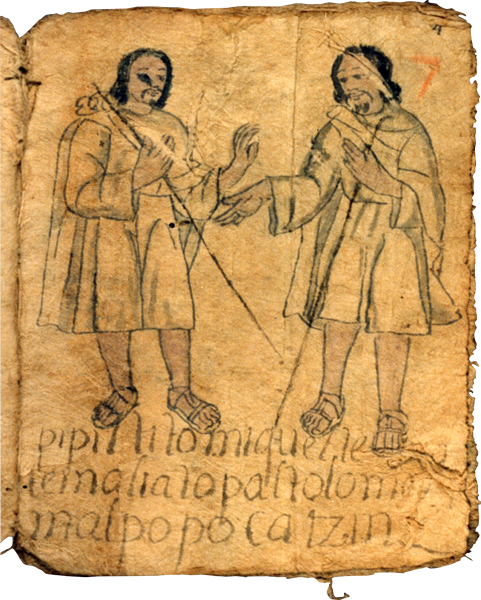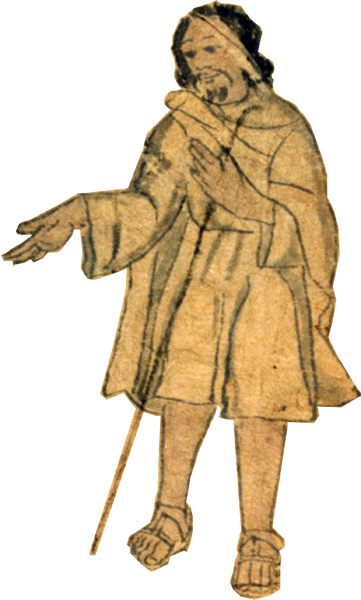indigenous man standing (colonial attire)
This is a detail, appearing in Book V, folio 4 recto, of an indigenous man standing, probably don Bartolomé Chimalpopocatzin. He is wearing sandals and knee-length, loose-fitting, white-cotton Spanish-colonial style pants and a long-sleeved tunic. He also wears a cloak tied at the right shoulder over his tunic, a symbol of his high status. He is outlined in black, and his skin is washed with a flesh-tone watercolor. His hair reaches to his shoulders and appears to turn under at the bottom. He has a pencil-thin mustache and a goatee. He is gesturing with his right hand, suggestive of some degree of authority, as does the stick that he holds, probably a staff of office. [SW]
un hombre indígena de pie (era colonial)
Detalle de un hombre indígena de pie, probablemente don Bartolomé Chimalpopocatzin, usando sandalias y vestido con pantalones de algodón blanco hasta las rodillas y túnicas mangas largas. Vesitido también en una capa alrededor de su cuello como símbolo de status social alto. Su figura está delineada en tinta negra, y pintada con acuarelas semejantes al color de su piel. Su pelo llega a los hombros y parece ser ondulado. Posee un bigote fino y una perilla. Está gesticulando con su mano derecha, sugieriendo cierto grado de autoridad al igual que el bastón que sostiene, por lo que probablemente es un representante del gobierno.
El texto al principio de la página identifica los hombres como “pipiltines” (nobles) y los nombra don Miguel de Santa María y don Bartolomé Chimalpopocatzin

